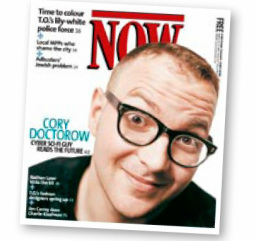
The article struck a chord with me for two reasons. The first is that my stats teacher said exactly the same thing to us on the first day of classes. (I think they all do.)
The other is that my experience coincides with Rob's. For example, one of the newsletters I edit has 35,000 subscribers. Only 12.3% of them open the newsletter. Of those, roughly 1% actually read more than the first article. While I love telling people that over 100,000 people subscribe to the newsletters I assemble, it certainly doesn't mean I am reaching nearly that number.
The same is true of Facebook. With over 17,000 "likes" on the FB page I manage, how many of those people actually look at any given post? I am lucky if it is a tenth of that. And very few of those people click on the link to the main site.
And don't get me started on how many of those people actually purchase anything.
Does this mean you should stop posting on Facebook, tweeting, and so on? No. The numbers may ultimately be meaningless, but prospective agents are always impressed by four or five zeros after any integer.
Apparently, none of them has never taken a stats class.
_________________________________
Numbers never lie…unless you’re talking social media: Measuring results in our rush to be followed, liked, and shared
By Rob Eagar on TOC
Back in college, I took a class on statistics and never forgot the first lesson my professor taught us, which was, “Anyone can manipulate numbers to make them mean whatever they want.” I see this point magnified today by the mass adoption of Twitter and Fakebook, err – I mean Facebook. We’re at a period in time where numbers can mean so much and simultaneously mean so little.
The more people use social media, the bigger a desire to be followed, liked, and shared. We live in an age where online popularity has the ridiculous ability to control major business decisions or determine someone’s career. Yet, there’s never been a time when big numbers can be inflated so easily and deceptively. For example:
1. According to the New York Times, people can buy fake followers on Twitter for $18 per 1,000. I’ve also seen shady businesses on Ebay offer fake Facebook followers for a similar price range.
2. Facebook claims to offer an effective advertising medium, yet their average click-through rate is .0005 (5 in 10,000) In addition, a Reuters/Ipsos poll found that 4 out of 5 Facebook users have never bought a product or service as a result of advertising or comments on the social network site.
3. In addition, researchers at the Ehrenberg-Bass Institute found that less than 1% of fans of the 200 biggest brands on Facebook actually engaged.
4. A guy claiming to have 50,000 Twitter followers bragged that he could use his influence to generate a bunch of sales for my new book. I put him to the test, let him send out his “tweets,” but never received a single order related to his audience. (For some time-wasting fun, check out http://fakers.statuspeople.com/ to help analyze how many legitimate Twitter followers someone actually has. 59% of Barack Obama’s followers are fake.)
5. According to ConstantContact, the average open rate for email newsletters is only around 19%. So, an author who claims to have 5,000 newsletter subscribers is probably reaching around 1,000 readers.
6. My own experience with the ShareThis WordPress plug-in for bloggers revealed that anyone can easily run up the share counter that’s displayed without actually sharing the information from a blog post with anyone. The counter may display “100” shares, but there’s no way to verify an actual number.
I’ve seen some bloggers (I don’t mean to bash, so they’ll remain nameless) promote an artificial number on their blog that combines all of their different social media followers and subscribers into one large number, which is designed to make you think their platform is bigger than it really is.
When the human ego merges with social media, there seems to be no limit to the level of nonsense that people will create. Numbers that are supposed to mean so much can actually mean very little.
As my statistics professor warned, be careful about putting too much faith in numbers. Just because someone displays 10,000 Twitter followers or Facebook friends doesn’t mean their sphere of influence is at that level. In an age where numbers are easily manipulated, we’re better off focusing on the only numbers that really matter, which is how many books sold, how many new readers added, and how many dollars deposited into the bank.









 RSS Feed
RSS Feed